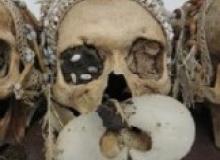 Head Hunting on the South Coast
Head Hunting on the South Coast
In 1957 the first contact was made along the Casuary Coast by a medical patrol. The hundred kilometre coast and the stroke of land situated inland from the coast were in those days regarded as one of the wildest areas of Papua New Guinea.
Doctor Willem Visser, was one of the members of the expedition into this area. An expedition which was certainly not without danger.
“ With this sort of work one…
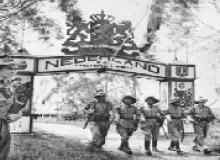 New-Guinea during World War II
New-Guinea during World War IIDutch New Guinea becomes involved in World War II in 1942. On 7 December 1941, Japan attacks several targets simultaneously. The best known is the attack on Pearl Harbour (Hawai), in which the American fleet was severely damaged. The Japanese invasion of Australian and Dutch New Guinea lasts from November 1941 until April 1942. The take-over happens in record…
lees meer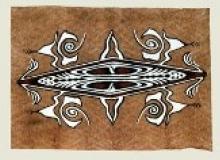 Tree Bark Cloth from Asei
Tree Bark Cloth from AseiKulit Kayu is a piece of cloth made from a sheet of bark which is processed into canvas and then painted. In the local language, the fibrous bark cloths are known as ‘maro’ or ‘tapa’. Tapa cloths are made on Asei, one of the islands of Lake Sentani, which is situated approximately 30 km west of the capital Jayapura.
Tapa was formerly used for women’s clothing but these days it is made to sell…
lees meer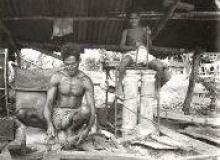 Working iron in New GuineaBefore World War II, former Dutch New Guinea, now the Indonesian provinces of Papua and West Papua, was regarded in the media as still being part of the so-called Stone Age. Irrespective of it being a useful concept, there were at least two reasons to take a more tempered view. Firstly, because iron implements were introduced shortly after contact with the first European ship in the area.
Working iron in New GuineaBefore World War II, former Dutch New Guinea, now the Indonesian provinces of Papua and West Papua, was regarded in the media as still being part of the so-called Stone Age. Irrespective of it being a useful concept, there were at least two reasons to take a more tempered view. Firstly, because iron implements were introduced shortly after contact with the first European ship in the area.
Secondly,…
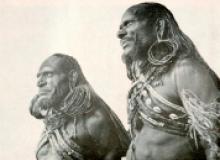 Eyewitness Report Headhunting
Eyewitness Report Headhunting
In 1939 the Dutch priest Jan Verscheuren witnessed a headhunting incident in kekaju village by the war-like tribe of the JEI people. He made notes which were then incorporated by Dr. Jan H.M.C. Boelaars in his book 'Nieuw Guinea uw mensen zijn wonderbaar' (New Guinea your people are amazing). Verscheuren described the killing and the rituals in great detail.
“The victim was hit on the back or killed…
lees meer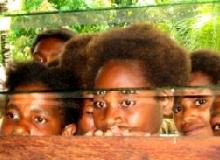 Doctors on the south coast in the FiftiesAround 1920 Healthcare in New Guinea started to develop. The growing number of doctors had more and more contact with Papuans and conducted an increasing number of examinations among the population. These were especially aimed at preventing common diseases such as malaria, yaws and tuberculosis.
Doctors on the south coast in the FiftiesAround 1920 Healthcare in New Guinea started to develop. The growing number of doctors had more and more contact with Papuans and conducted an increasing number of examinations among the population. These were especially aimed at preventing common diseases such as malaria, yaws and tuberculosis.
Physician Willem Visser lived in the southern part of New Guinea during the 1950’s. At that time, he reported on his…
lees meer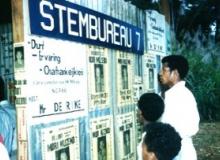 Experiment with Nieuw-Guinea regional councils
Experiment with Nieuw-Guinea regional councils
On 5 April 1961 the New Guinea Council (Nieuw-Guinea Raad) was set up. It was an important moment during a period (1959-1962) in which a more democratic mode of administration started to develop within the Dutch colony. Besides the New Guinea Council, regional councils were also elected, which acted as "subdivisions". These regional councils formed a link between the village councils and the New Guinea Council…
lees meer